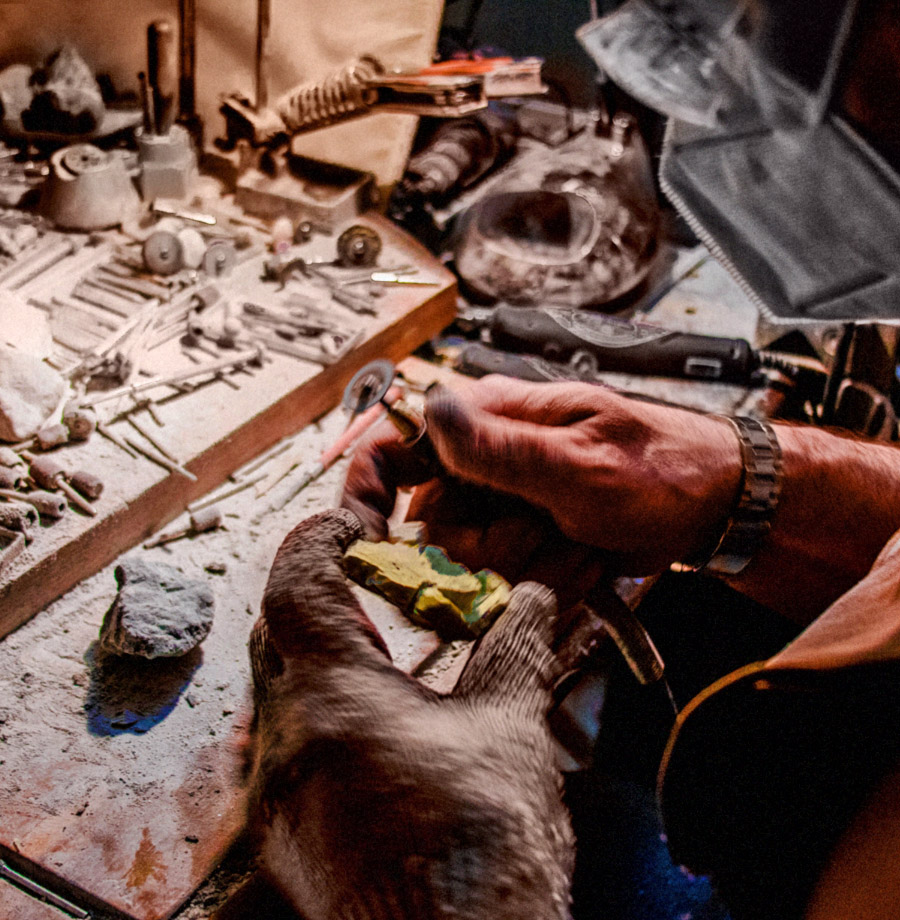
Tactile art is created by a complex multi-step process of preparing, shaping and re-surfacing the rock…
How ARE THEY MADE?
Each piece is undergoing a rigorous, long process of creation, starting from acquiring the stones and ending with hours of fine perfecting.
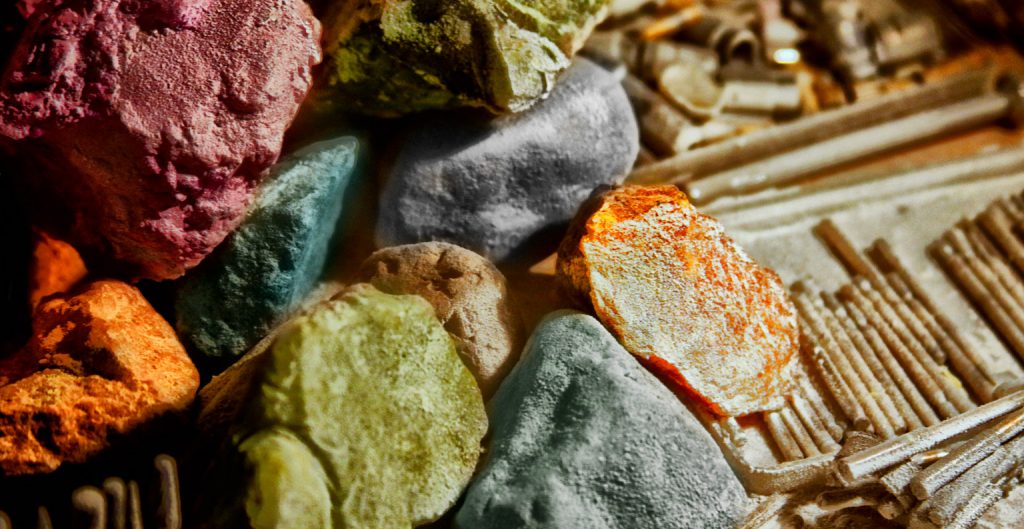
THE BEGINNING: CHOOSING THE ROCK
The materials for the sculptures are acquired from different sources, which include rare minerals purchased from far away as well as collecting rocks on the distant location by the artist himself. Each sculpture is unique and so are the materials that include aventurine, emerald ore, serpentine, sodalite, jasper, various types of quartz, granite, marble and even pertified wood…
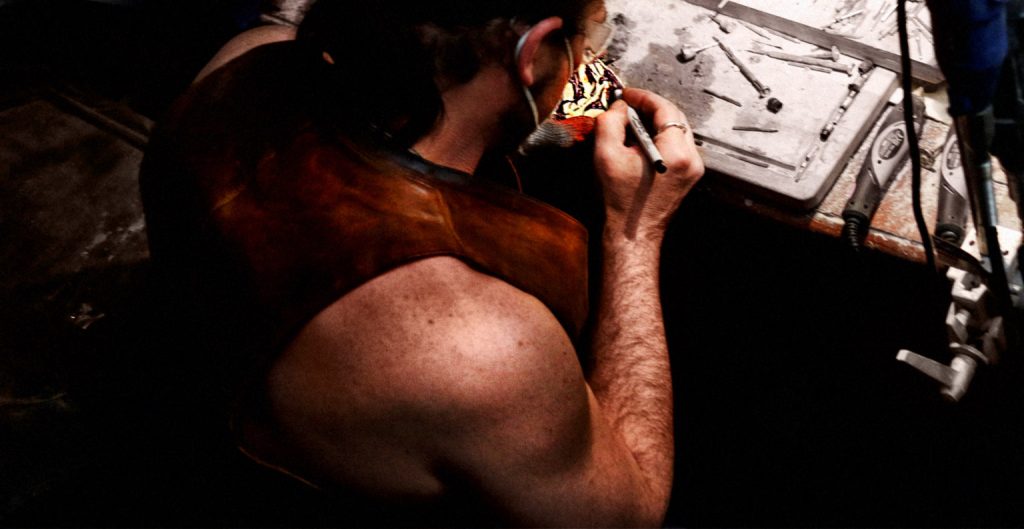
INITIAL IDEA: FINDING THE INHABITANT
Alex AG always insists that he is not choosing what shape will come of a specific rock. He simply observes the material and releases the shape that always was inside. Before the sculpting begins, the artist is studying the form and the structure of the specimen, looking for the hidden shape and planning the path to revealing it. Sometimes the process is done freehand by a pure improvisation, and at other instances the detailed outline is made before the process begins.
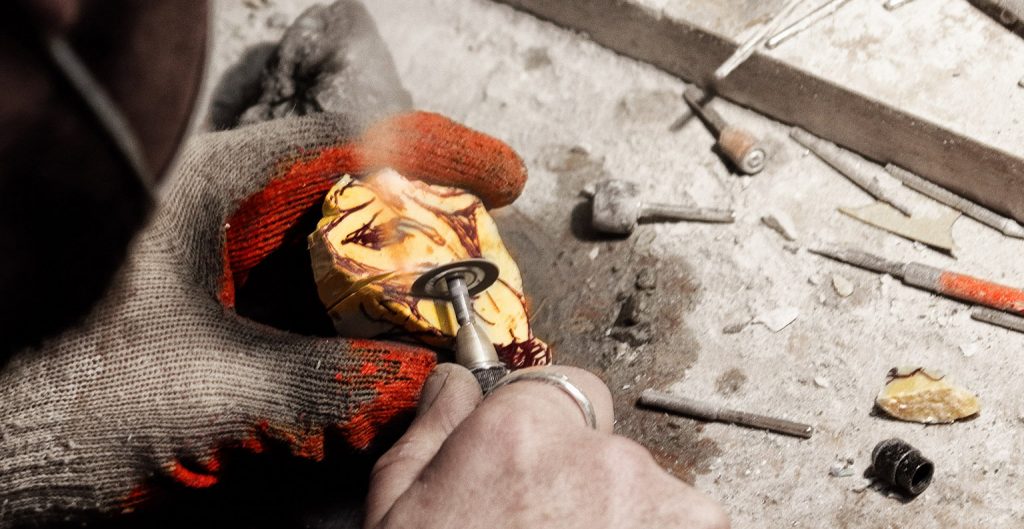
CREATING THE PATH: SHAPING THE STONE
The first step in creating the sculpture is shaping the rock into a selected form. This is a complex process with a high risk of the stone breaking at any instance. The finished art piece is expected to be experienced by the sense of touch, therefore even on this stage the foundation has to be established: the way the stone is shaped tells the story to the fingers and creates a smooth path for hands traveling over the object in any direction.
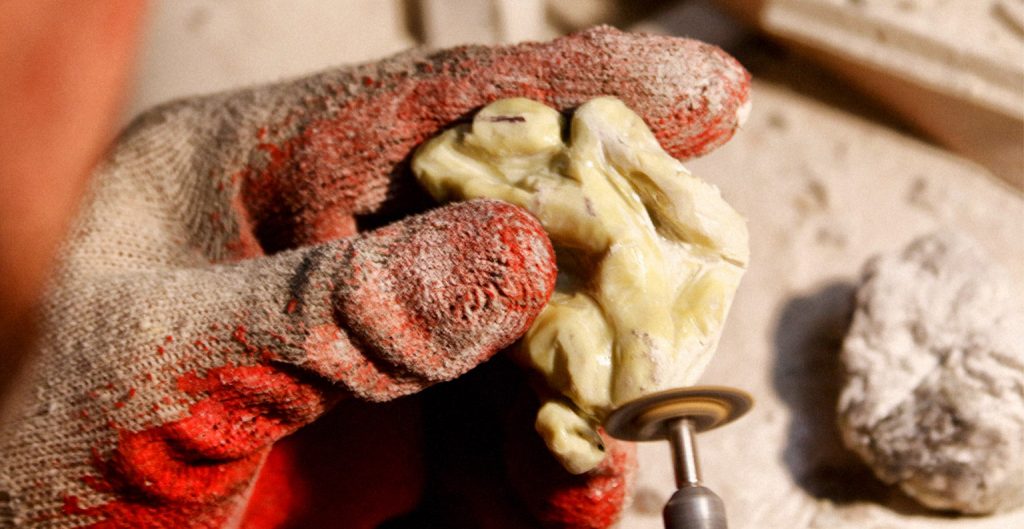
THE SURFACE: CREATING THE NARRATIVE
After the general shape of the sculpture is created, there comes the time for adding a finish to the surface. The way the stone is treated depends on the nature of the rock. It is in accord with the shape of the sculpture and based on a complex process that involves creating the surface that is working with the shape to tell the story. Some parts of the surface will end-up glass-smooth – suggesting the elevated energy; other areas will be silky soft, similar to the feel of the skin – calming and slowing the movement… certain areas will receive a rough pattern, slowing down the hand motion even further and adding the accents to the shape. Some areas will retain the original natural finish of the rock, ranging from smooth, shaped by the water, to almost aggressive broken rock. After the mechanical polishing is complete, the stones receive their first quick initial hand polish with various sand papers, fabrics and leathers. Artist by hand completes the surfaces and prepares it for the final stage.
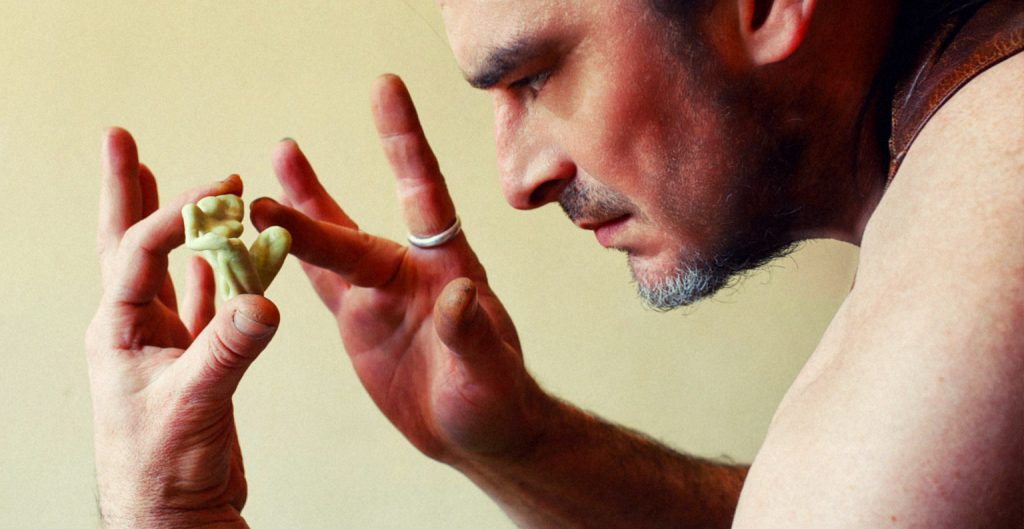
THE PERFECTING: CREATING IDEAL SURFACE
After the initial shape and form of the sculpture is completed, the art piece spends hours in the hands of Alex AG being examined from every angle and direction. The artist identifies the shapes, spots and errors of the surface in order to take the piece back to the working bench and have them adjusted.
After that the sculpture receives the second round of hand polish and usually is considered completed at this point, unless more errors are found. In that case this step is repeated again, until the sculpture is perfect.
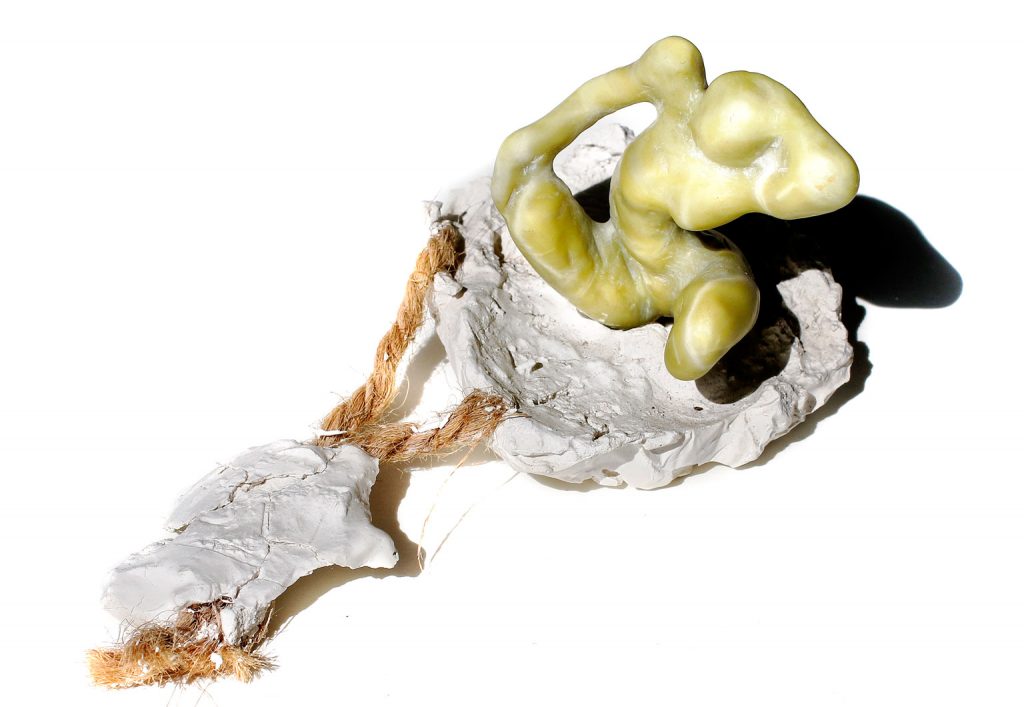
CERTIFICATION: THE NEW PLASTER-CAST PODS/CERTIFICATES
The standard AG’s certificate contains the red ink imprint of the sculpture, however the new format offers something even more exciting: a plaster cast, containing a 3D imprint of the artwork, signed, stamped and dated by Alex AG. These certificates are made only for small number of pieces and per a buyer’s request they can be made for any of the works. Each pod is unique to it’s piece and cannot be forged or altered to fit a different work.